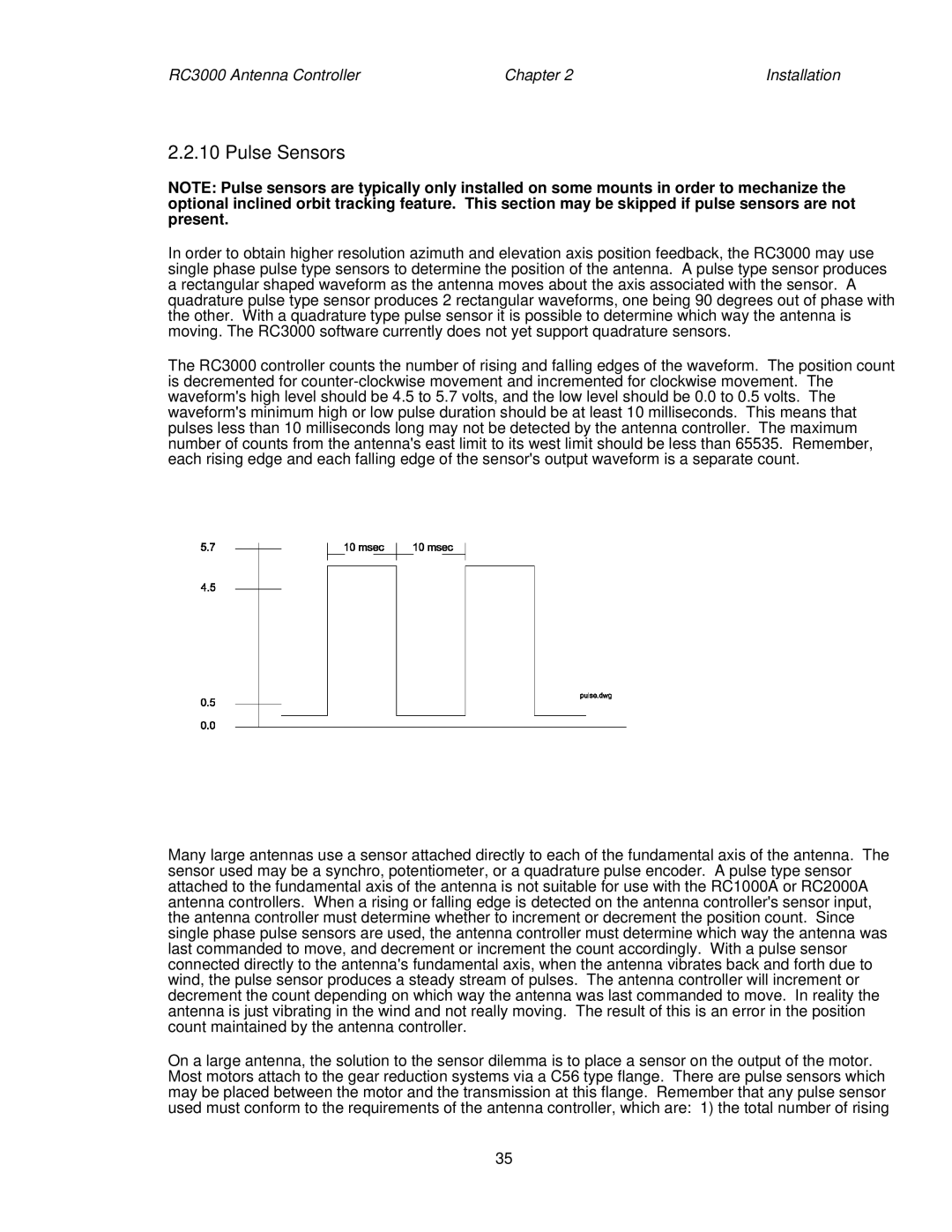
RC3000 Antenna Controller | Chapter 2 | Installation |
2.2.10 Pulse Sensors
NOTE: Pulse sensors are typically only installed on some mounts in order to mechanize the optional inclined orbit tracking feature. This section may be skipped if pulse sensors are not present.
In order to obtain higher resolution azimuth and elevation axis position feedback, the RC3000 may use single phase pulse type sensors to determine the position of the antenna. A pulse type sensor produces a rectangular shaped waveform as the antenna moves about the axis associated with the sensor. A quadrature pulse type sensor produces 2 rectangular waveforms, one being 90 degrees out of phase with the other. With a quadrature type pulse sensor it is possible to determine which way the antenna is moving. The RC3000 software currently does not yet support quadrature sensors.
The RC3000 controller counts the number of rising and falling edges of the waveform. The position count is decremented for
Many large antennas use a sensor attached directly to each of the fundamental axis of the antenna. The sensor used may be a synchro, potentiometer, or a quadrature pulse encoder. A pulse type sensor attached to the fundamental axis of the antenna is not suitable for use with the RC1000A or RC2000A antenna controllers. When a rising or falling edge is detected on the antenna controller's sensor input, the antenna controller must determine whether to increment or decrement the position count. Since single phase pulse sensors are used, the antenna controller must determine which way the antenna was last commanded to move, and decrement or increment the count accordingly. With a pulse sensor connected directly to the antenna's fundamental axis, when the antenna vibrates back and forth due to wind, the pulse sensor produces a steady stream of pulses. The antenna controller will increment or decrement the count depending on which way the antenna was last commanded to move. In reality the antenna is just vibrating in the wind and not really moving. The result of this is an error in the position count maintained by the antenna controller.
On a large antenna, the solution to the sensor dilemma is to place a sensor on the output of the motor. Most motors attach to the gear reduction systems via a C56 type flange. There are pulse sensors which may be placed between the motor and the transmission at this flange. Remember that any pulse sensor used must conform to the requirements of the antenna controller, which are: 1) the total number of rising
35
